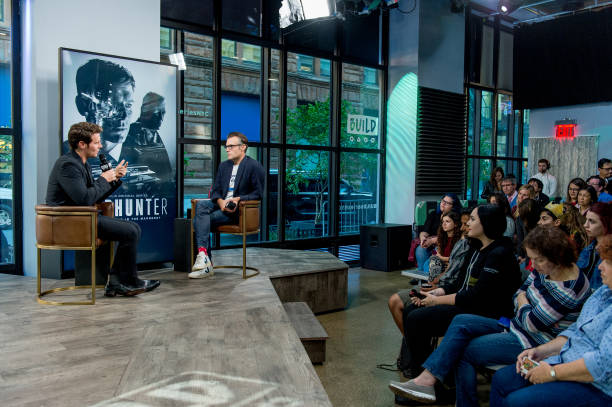
The Massacred War…
We Were Soldiers is a powerful American war film written and directed by Randall Wallace and starring Mel Gibson. The film has a stellar ensemble cast that includes Madeleine Stowe, Greg Kinnear, Sam Elliott, Chris Klein, Keri Russell, Barry Pepper, Đơn Dương, Ryan Hurst, Clark Gregg, Jon Hamm, and Dylan Walsh. It is based on a true story with military action and minimum drama that moves at a gut-wreching pace but full of heart-racing moments! Adapted from the 1992 book We Were Soldiers Once…and Young by Lieutenant General (Ret.) Hal Moore and reporter Joseph L. Galloway, it dramatizes the Battle of Ia Drang on November 14, 1965.


















On Sunday, November 14, 1965 at 10: 48 a.m., Lt. Col. Hal Moore, (in a magnificent performance by two-time Academy Award winner Gibson), and his regiment of 400 men, the 1st Battalion, 7th Calvary, or as Moore would refer to it, “General Custer‘s old Battalion“, known for the Battle of Little Bighorn, Moore sees this as some kind of bad omen, but none the less, they touch down at Landing Zone X-Ray in the Ia Drang Valley, a place in Vietnam known as “The Valley of Death”. Moore and his men find themselves surrounded by roughly 2,000 North Vietnamese soldiers and the ensuing battle becomes one fo the most savage in American war history. The film dislays the heroism, bravery, and sacrifce of the very real men in United States history that fought at the Battle of Ia Drang, the film also shows the butchery of battle and the fog of war, as We Were Soldiers is a grueling exploration at the concept of war in all its collateral damage for both sides, as well as all of the horror invloved in the pursuit of rightousness of war. We Were Soldiers takes its place among great American war history classics like Apocalypse Now, Platoon, and Saving Private Ryan!













The Battle of Ia Drang was the first major battle between the United States Army and the People’s Army of Vietnam (PAVN), as part of the Pleiku Campaign conducted early in the Vietnam War, at the eastern foot of the Chu Pong Massif in the central highlands of Vietnam, in 1965. It is notable for being the first large scale helicopter air assault and also the first use of Boeing B-52 Stratofortress strategic bombers in a tactical support role. Ia Drang set the blueprint for the Vietnam War with the Americans relying on air mobility, artillery fire and close air support, while the PAVN neutralized that firepower by quickly engaging American forces at very close range.










The battle at LZ X-Ray was documented in the CBS special report The Battle of Ia Drang Valley by Morley Safer and the critically acclaimed book We Were Soldiers Once… And Young by Moore and Galloway. In 1994, Moore, Galloway and men who fought on both the American and North Vietnamese sides, traveled back to the remote jungle clearings where the battle took place. At the time the U.S. did not have diplomatic relations with Vietnam. The risky trip which took a year to arrange was part of an award-winning ABC News documentary, They Were Young and Brave produced by Terence Wrong.










Galloway later described Ia Drang as “the battle that convinced Ho Chi Minh he could win”.

We Were Soldiers is the Featured Film Blog of the month for July, as we remember the United States and its Revolutionary Day, and the American men wo were soldiers once, and young that made up that revolution. While we did not have the same success in Vietnam, fathers, brothers, husbands, and sons still fought for the ideal of freedom with some paying the ultimate price, all of them bearing any burden and attempting to oppose and survive any foe to assure the survival and success of liberty. Movies to History looks at the failure that wasn’t the Revoltionary War, but no less describes the heart of a nation in every generation of grueling war, no matter the outcome. You can expect to read a critique of the 2002 film, as well as a detailed explanation and significance of the Battle at Ia Drang Valley. You can also read a recommendation for the film that includes the very real soldiers that are dramatized in the film and fought alongside Lt. Col. Hal Moore at the Ia Drang Valley. There is also a review of the 1992 book that the film is based off of, We Were Soldiers Once… and Young by Lieutenant General (Ret.) Hal Moore and reporter Joseph L. Galloway. You can also watch the classic 1965 interview documentary in the CBS special report The Battle of Ia Drang Valley by Morley Safer where the battle at LZ X-Ray was documented. There is also a Top Ten List to commemorate the film being a Featured Film Blog of the month, and for We Were Soldiers, the topic of the list is My Top Ten Vietnam War Movies! And finally, as a Featured Blog of the month, you can watch the Official Trailer for the 2002 film and then plan on watching We Were Soldiers on Paramount+ with Showtime tonight!
SCROLL DOWN AND WATCH THE OFFICIAL TRAILER!

We Were Soldiers is available now with a subscription to Paramount+ with Showtime…




